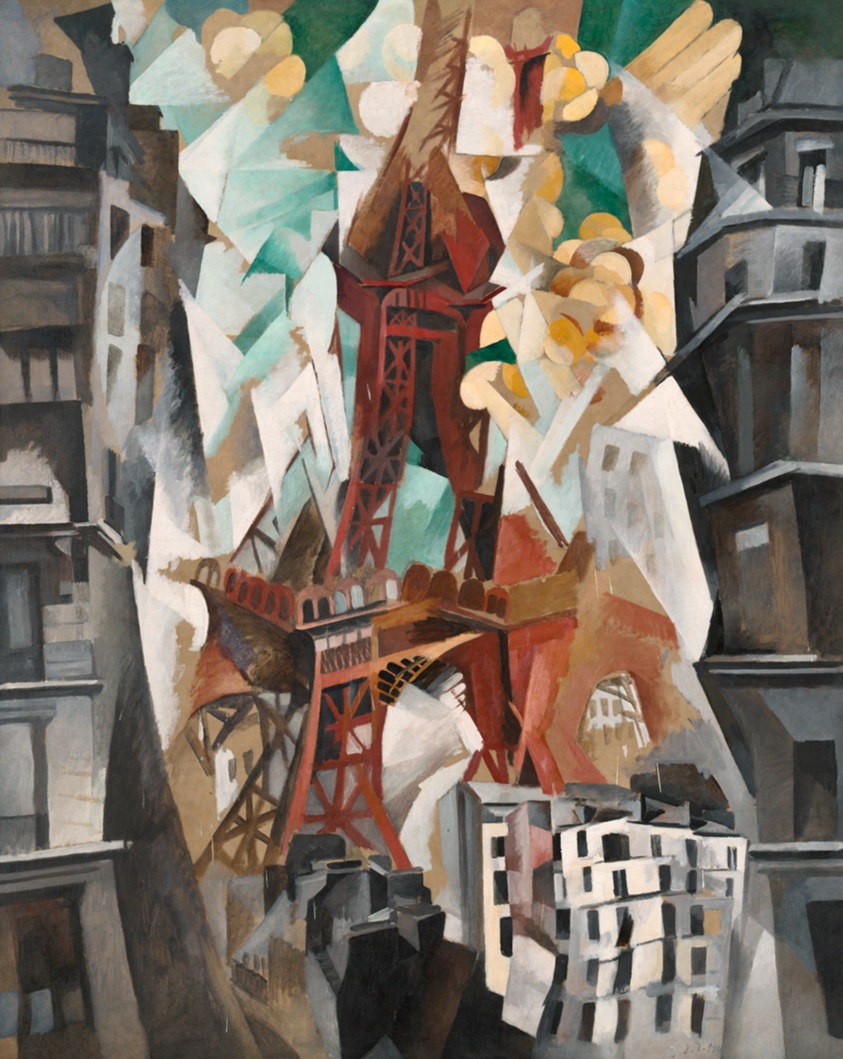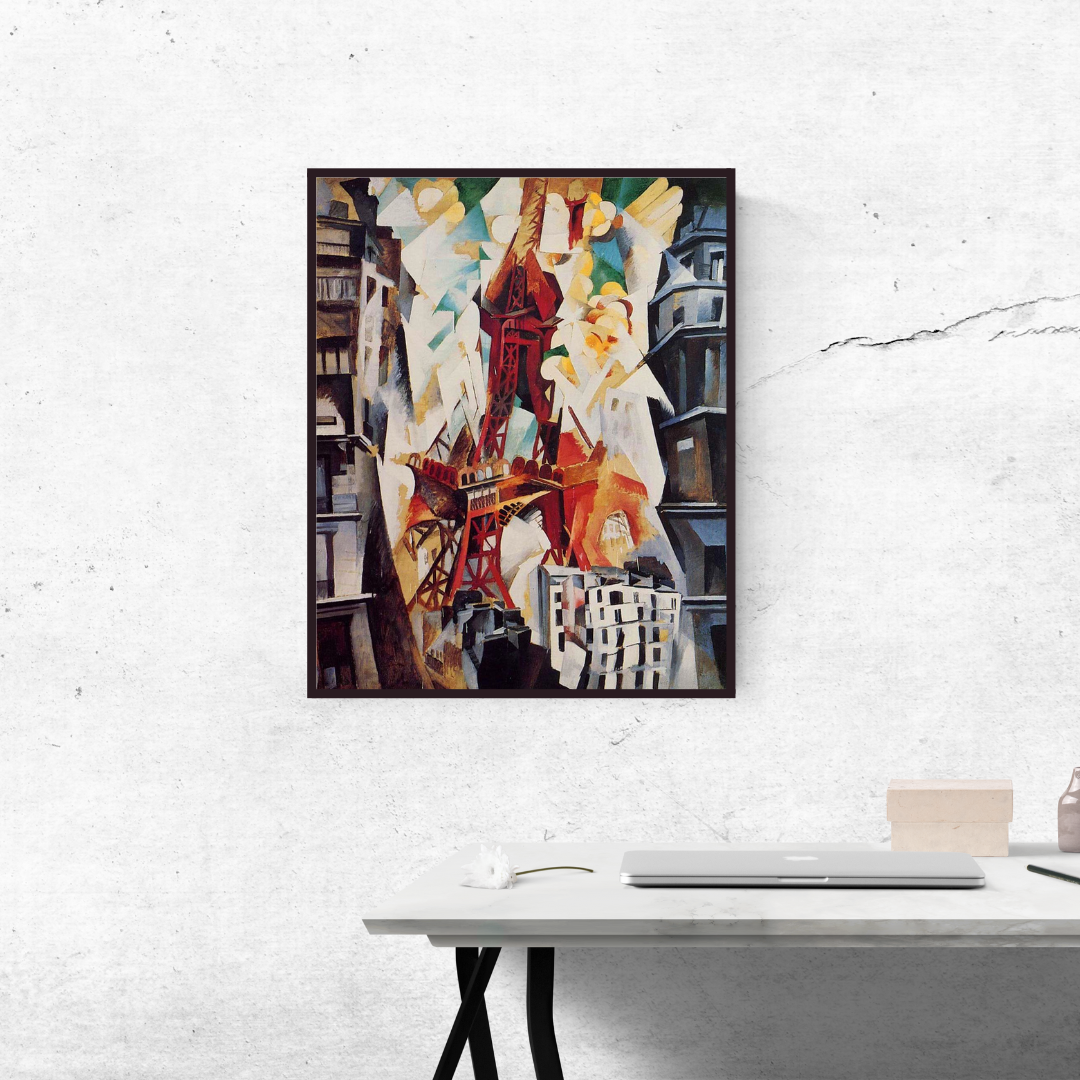Champs de Mars:The Red Tower
Champs de Mars: The Red Tower (1911) by Robert Delaunay is a striking oil painting of the Eiffel Tower, a symbol of modernity and innovation. Influenced by Cubism and the expressionist group Der Blaue Reiter, Delaunay created this work during his transition toward Orphism—a style marked by vivid color, rhythmic forms, and abstraction. The painting captures the tower’s dynamic presence with fragmented structures, vibrant contrasts, and upward momentum, framed by the gray Parisian cityscape. First exhibited in 1912 and later revised by the artist, the work now resides in the Art Institute of Chicago as one of Delaunay’s most iconic modernist pieces.
Ratings / Reviews
Información adicional
| Dimensions | Original: 160.7cm × 128.6 cm, Small: 64.3 cm × 51.4 cm, Medium: 96.4 cm × 77.2 cm, Large: 128.6 cm × 102.9 cm |
|---|
$316.00 – $828.00Price range: $316.00 through $828.00
Champs de Mars: The Red Tower (Champs de Mars: La Tour Rouge) is a 1911 oil on canvas painting by French modernist Robert Delaunay, currently housed at the Art Institute of Chicago. A defining work of early 20th-century abstraction, it belongs to a celebrated series centered on the Eiffel Tower—then a potent emblem of technological advancement and national pride. In this series, Delaunay used the iconic Parisian landmark as a lens through which to explore rhythm, structure, and the expressive possibilities of color.
The painting marks a critical phase in Delaunay’s artistic development and the emergence of Orphism, a movement he helped pioneer. Rooted in Cubism but more lyrical in intent, Orphism focused on dynamic compositions and vibrant chromatic contrasts to evoke movement and emotion. In The Red Tower, these elements come to the fore. The Eiffel Tower appears in striking red, rising sharply through a fragmented, kaleidoscopic cityscape. Below, muted gray blocks suggest the dense architecture of Paris, while above, swirling clouds and energetic brushwork lend the composition a sense of continuous motion.
The structure’s vertical thrust and dominant presence are amplified by the disjointed perspective—an embodiment of Delaunay’s exploration of simultaneity and the multiplicity of viewpoints. Rather than offering a single static angle, the painting evokes the passage of time and shifting perception. In this sense, Champs de Mars: The Red Tower departs from representational fidelity and embraces abstraction as a means of capturing modernity’s pulse.
Initially exhibited in 1912 at Galerie Barbazanges in Paris, the painting drew critical attention from contemporaries such as Guillaume Apollinaire, who noted its unfinished appearance. Over the following years, Delaunay revisited the work, revising parts of the canvas and integrating new elements. By 1923, when it was featured in the Bulletin de l’Effort Moderne, it had evolved into its current form.
While traces of Impressionism remain in the treatment of light and atmospheric effects, the painting represents a decisive break with naturalism. It signals Delaunay’s shift toward structural deconstruction—a hallmark of early modernist innovation. Today, Champs de Mars: The Red Tower is recognized as a landmark in the history of abstract painting, capturing both the energy of the machine age and the transformative spirit of modern art.


